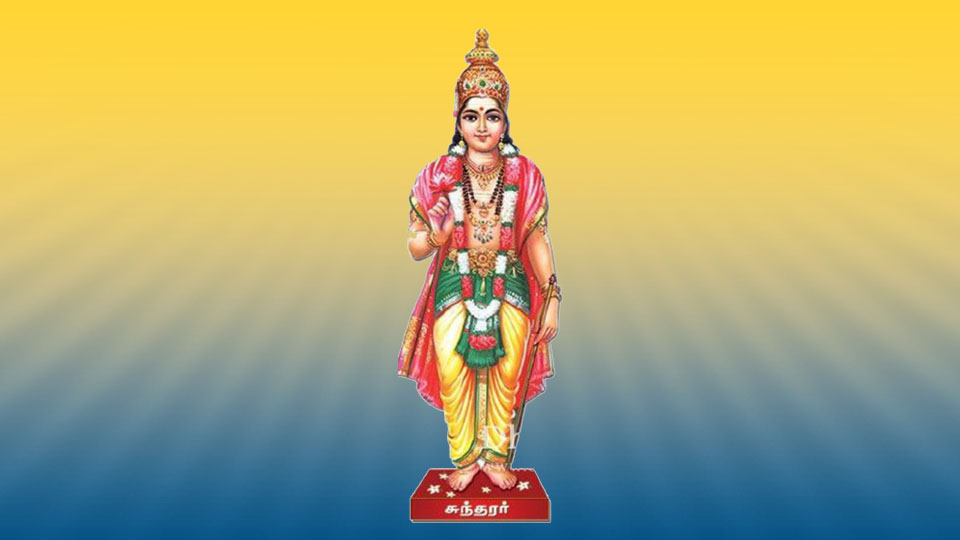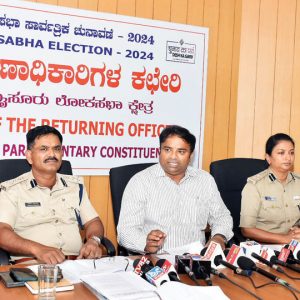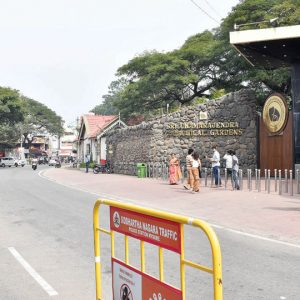By Prof. A.V. Narasimha Murthy, former Head, Department of Ancient History & Archaeology, University of Mysore
South India from ancient times has been a cradle for many saints who either belonged to Shaiva or Vaishnava sects. That tradition is being continued even in modern times as evidenced by many Mutts and temples. In fact the number of temples and Mutts are increasing day by day and are upholding the dharma of the land. Ours is a secular country but that does not mean that we should not go to temples or Mutts. On the other hand it is expected that we treat the various religious denominations with equal respect and give proper patronage.
In ancient times the kings used to build and patronise Mutts and temples. The best examples are those of Hoysala Vishnuvardhana or the kings of Mysuru kingdom. Now the monarchies, kings and queens have passed on to pages of history and as per democratic tradition the responsibility of developing and patronising these institutions rests with the people who are the most important limb of the democracy. Under this background, let us examine the case of Sundaramurti of the present-day Tamil Nadu.
In ancient times the area between Chola territory and Tondamandalam was called Tirumunaippadinadu. In this area was a small village called Tirunavallur. Sundaramurti was born here in a Shaiva brahmana family. His father was Shadaiyanar while his mother was Ishaijnaniyar. This husband and wife lived a contented religious life always worshipping the gods and doing social service and naturally they were held with great respect by the then contemporary society. Sundarar is believed to have lived during the 8th century AD though his exact dates are not definitely known.
Actually the boy’s original name was Nambi Arurar. But he became famous as Sundarar meaning most beautiful. No doubt he was physically very charming but was more beautiful in his inner mind and hence his new epithet Sundarar. There is also another view that in his previous birth, he did good deeds and was rewarded with Kailasa. Kailasa being the most beautiful place (Sundara), the saint got the name Sundarar. According to a legend, Siva’s attendant by name Halahala Sundara fell in love with Parvathi’s maids and due to this folly they were cursed to be born as human beings.
One day the boy Nambi Aruvar was playing with a toy cart outside his home. The royal chief of that area was going through that way and he saw this boy playing. Fascinated by the charm of this boy, he wanted to adopt him as his son and bring him to his Palace. The parents agreed and he was given education as a common boy though he was in the Palace. The boy came of age and the parents were about to get him married. Here the Periyapuranam comes to our aid and narrates the entire story.
Shiva appeared in the guise of a old brahmana and said that he had filed a case against the bridegroom. Sundarar disputed this claim and rebuked him. The old man showed a document which the opposite party claimed as forgery. Hence it was torn into pieces. As he belonged to Nallur, Sundarar suggested that they should settle the case at Nallur itself in an assembly of brahmanas. At that stage Sundarar was asked to compose prayers in honour of Lord Shiva. In the meantime, the marriage proposed failed and because of this the bride remained a virgin and died in course of time.
Then Sundarar went to Chidambaram and had the vision of the Lord Nataraja. Then he continued his onward journey. At Tiruvadigai, King Thirunavakkarasu became a Shaiva. He was sleeping in a mandapa and he felt that someone was pressing his head by his foot and he realised that the foot was that of Lord Shiva himself. He was gratified by the blessing. Then he proceeded to Shirkali and had the darshan of the Lord in a vision. At Shirkali a great event happened in his life. His marriage with Paravaiyar was solemnised and the couple settled down to the routine of married life.
At Tiruvarur temple he saw a group of devotees and he requested Lord Shiva to make him their servant so that he can be humbled. Then the Lord advised him to compose a poem and ordered him to write down the lines beginning from ‘I am the servant of the servants of the brahmanas residing in Chidambaram’ (dasasya dasa, bhrityasya Bhritya). Then he sang in praise of sixty three saints. This poem is called Tiruttondattogai, which as we have seen is the source book for Sekkilar’s Periyapuranam.
One householder was supplying grains to Sundarar. But owing to failure of rain it was not possible for him to do so. Then he refused to eat. Next morning villagers found heaps of rice everywhere and were supremely happy and Sundarar knew that it was a miracle by the Lord himself. The problem was how to transport that much of rice. This also was solved by the Lord himself. Many miracles happened. The king had kept his hands as his pillow and in the morning he saw it turn to gold bricks. This gold he used for providing food and shelter to the devotees. Then he went to Matapadi and other places. Next he visited Kanchi and Kalahasti. The news of his miracles spread far and wide. Sundarar is said to have composed 38 thousand poems and only one fourth are available now.
Sundarar believed that Moksha is the gift of God even though one has done good deeds. Even death should be a gift of God. It is the Lord, who alone knows when the grace of death should be given to any individual. Thus Sundarar left everything to the grace of God. With all his knowledge and devotion he expressed that he had many faults and the Lord was graceful enough to accept them and pardon him. The Lord would accept even the faults of devotees provided they realise them and repent for them and pray to the Lord. Thus devotion or surrender is supreme.
Following all these principles, Sundarar attained Moksha and remained immortal to guide the future generations. It is our duty to follow these teachings and lead a good and ethical life and ultimately reach the heaven.
[Courtesy: BVB, Mumbai, Ten Saints of India by T.M.P. Mahadevan, 1990]








Recent Comments